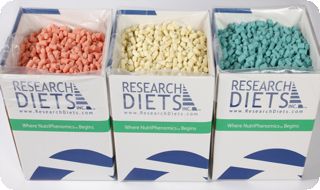Whatman 滤膜 1442-042 42号滤纸 圆型42.5mm/100 GR 42 4.25CM 100/PK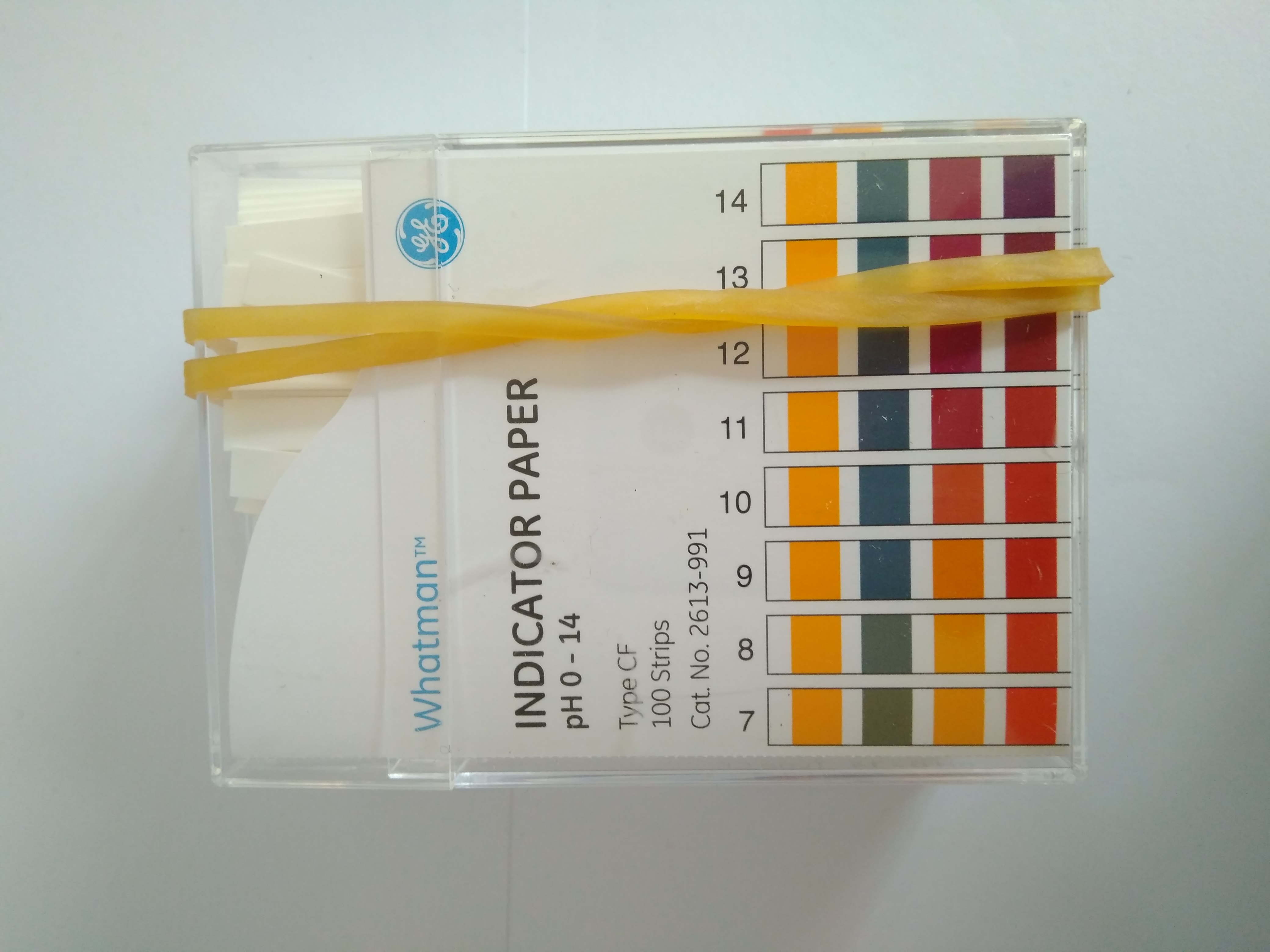
日度归档:2024年11月1日
鹿genius®分子疫学分析POT配套元件(不动杆菌属菌用)|分子疫学分析POT套件|生化学试剂-基因工程|试剂|关东化学株式会社
菌种简易鉴定(<em>A . baumannii</em>,<em>A . pittii</em>,<em>A . nosocomialis</em>,A . sp . close to 13 TU)可能
<em>A . baumannii</em>菌株能够识别
<em>A . baumannii</em>的国际流行克隆(微星科技cloneⅠ、Ⅱ)能够识别
Multilocus Sequence Typing(MLST)法和几乎同等的识别能力
配套元件的构成(30回)
操作步骤

电泳模式
产品信息
的相关产品
POT套件·PCR套件
分离培养基
电泳相关
宣传手册、说明书(PDF)
计算表(ZIP文件,Excel)
的相关产品
该文章由WP-AutoPost插件自动采集发布
水溶性荧光染料43390 Sulfo-Cyanine5 carboxylic acid 25 mg
水溶性lumiprobe荧光染料43390 Sulfo-Cyanine5 carboxylic acid 25 mg 水溶性lumiprobe荧光染料Sulfo-Cyanine5 羧酸 25 mg 690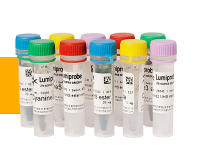
Pall颇尔滤膜 AP-4791 FILTER GXF/PTFE 0.2UM PK1000
Pall颇尔滤膜 AP-4791 FILTER GXF/PTFE 0.2UM PK1000 2923 23380
Pall颇尔滤膜 13676 CHARGER 220V C3 FLAT PIN UK
Pall颇尔滤膜 13676 CHARGER 220V C3 FLAT PIN UK 518 4141
Whatman 滤膜 2811-308 玻璃微纤维套管, 30x80mm/25
Whatman 滤膜 2811-308 玻璃微纤维套管, 30x80mm/25 THIMBLE GF 30x80MM 25/PK
康宁corning 431446 CAP,2L ERLENMEYER ACCESS,LUER 无菌移液盖 1个/包
康宁corning 431446 CAP,2L ERLENMEYER ACCESS,LUER
无菌移液盖 1个/包 6包/箱 11698.33
Hampton PEG/Ion • PEG/Ion 2 • PEG/Ion HT
Hampton PEG/Ion • PEG/Ion 2 • PEG/Ion HT
 Primary or secondary, polymer, salt and pH matrix crystallization screen for biological macromolecules
Primary or secondary, polymer, salt and pH matrix crystallization screen for biological macromolecules
| Developed at Hampton Research |
| PEG/Ion is a sparse matrix profile of anions and cations in the presence of monodisperse Polyethylene glycol 3,350 over pH 4.5 – 9.2 |
| PEG/Ion 2 screens a complete profile of titrated organic acids at varying pH levels (3.7 – 8.8) in the presence of monodisperse PEG 3,350 |
| PEG/Ion HT combines PEG/Ion and PEG/Ion 2 in a single 96 Deep Well block |
PEG/Ion, developed by Hampton Research, is a crystallization screen designed to evaluate monodisperse, high purity Polyethylene glycol 3,350 and 48 unique salts representing a very complete range of anions and cations frequently used in the crystallization of biological macromolecules. The primary screening variables are PEG, ion type, ionic strength, and pH. More than 60% of the published crystallizations utilized PEG as a primary crystallization reagent and in approximately 50% of those reports, the PEG was combined with an ion as a secondary crystallization reagent. PEG/Ion reagents are formulated without a buffer and are not pH titrated.
PEG/Ion 2 is an extension to the fundamental crystallization strategy in PEG/Ion. PEG/Ion 2 reagents cover the monodisperse, high purity Polyethylene glycol 3,350 and an array of neutralized and pH adjusted organic acids, multivalent ions, a novel Citrate BIS-TRIS propane buffer system and pH (4 – 8.8). The formulation of PEG/Ion 2 was developed at Hampton Research. Each of the 48 reagents in PEG/Ion 2 contains PEG 3,350 as the polymer (precipitant). The concentration of PEG is varied from 12% w/v to 20% w/v depending upon the type and concentration of buffer/salt paired with the polymer. Thirteen of the forty-eight PEG/Ion 2 reagents contain a separate buffer component. The remaining PEG/Ion 2 reagents are buffered by the titrated organic acid salt. Six of these thirteen conditions feature a novel Citric acid BIS-TRIS propane (CBTP) buffer. The CBTP buffer uses Citric acid and BIS-TRIS propane as the acid base pair to create a two component buffer system effective across pH 2.5 to 9.5. The ratio of Citric acid to BIS-TRIS propane determines the solution pH. Thirty-five of the forty-eight PEG/Ion 2 reagents contain a neutralized or pH adjusted organic acid in the presence of the polymer. Neutralized organic acids are highly effective crystallization salts.1 Four PEG/Ion 2 reagents feature polyvalent cations. Two of these reagents contain cation mixes, saving sample by screening six different cations with only two reagents. Tryptone, a casein digest combinatorial library of peptides, is included in PEG/Ion 2. PEG/Ion 2 reagents 1-30, 42, 45-47 are formulated without a buffer and are not pH titrated.
PEG/Ion contains 48 unique reagents, 10 ml each.
PEG/Ion 2 contains 48 unique reagents, 10 ml each.
PEG/Ion HT contains 1 ml of each reagent from PEG/Ion and PEG/Ion 2 in a single Deep Well block format.
Ready-to-use reagents are sterile filtered and formulated with ultra-pure Type 1 water, using the highest purity salts, polymers, organics and buffers. Individual reagents are available through the Hampton Research Custom Shop.

 |
||||||||||||
Crystals of Peptidoglycan Recognition Protein (PGRP) from camel milk grown using the Hampton Research PEG/Ion screen. Sharma, P., Singh, N., Sinha, M., Sharma, S., Perbandt, M., Betzel, C., Kaur, P., Srinivasan, A. & Singh, T.P. All India Institute of Medical Sciences, Department of Biophysics, New Delhi, India.
|
荧光染料46040 Amino-11-dUTP 25 umol
lumiprobe荧光染料46040 Amino-11-dUTP 25 umol lumiprobe荧光染料Amino-11-dUTP 25 umol 395
OXOID培养基 SR0119E 阴道加德纳菌选择性添加剂 GARDNERELLA VAGINALIS SEL.SUPP.1X10VIA
OXOID培养基 SR0119E 阴道加德纳菌选择性添加剂 GARDNERELLA VAGINALIS SEL.SUPP.1X10VIA 486.0775894464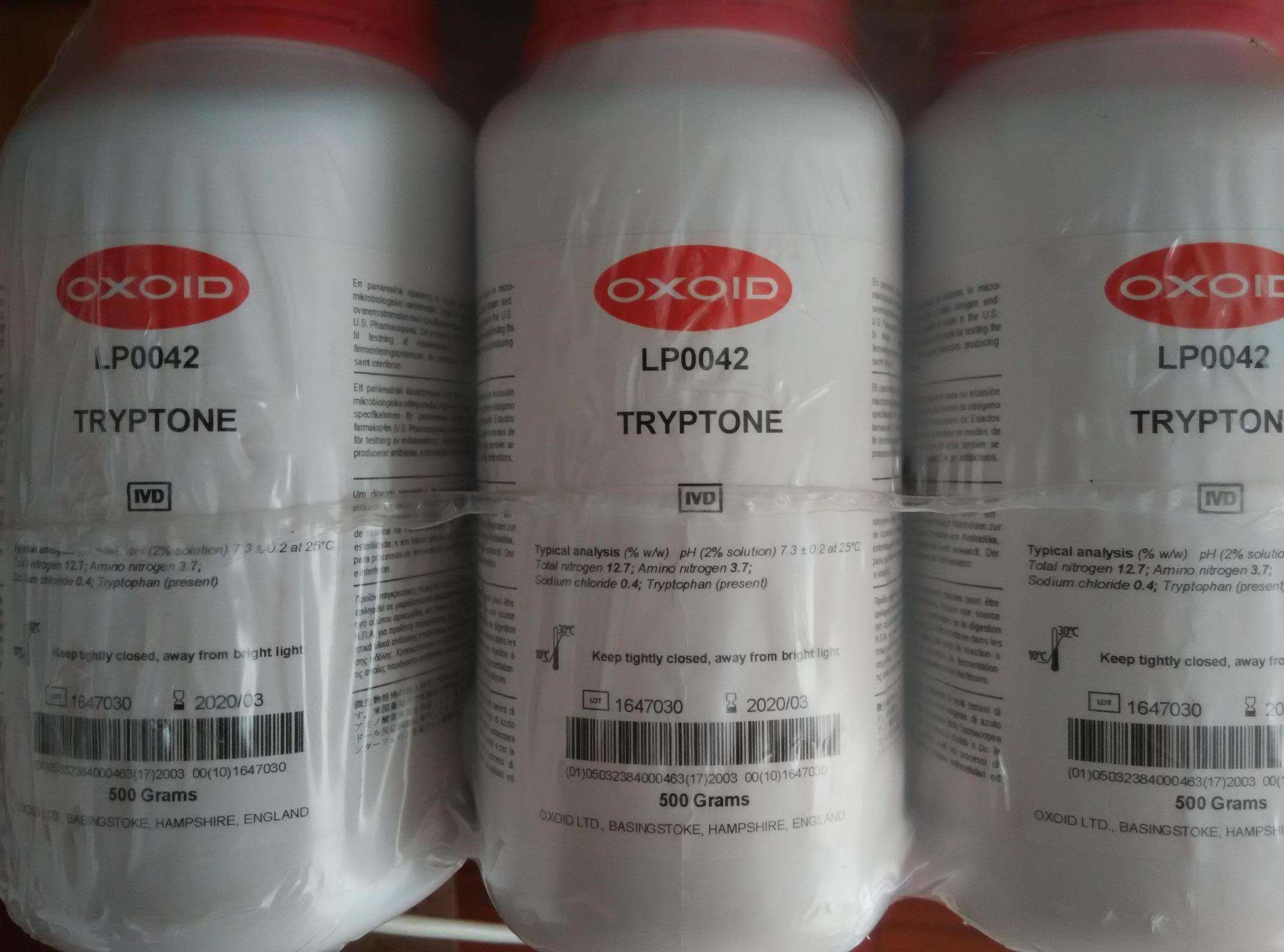
Amresco 0569-2.5KG AMMONIUM PHOSPHATE, DIBASIC 磷酸氢二铵
Amresco 0569-2.5KG AMMONIUM PHOSPHATE, DIBASIC 磷酸氢二铵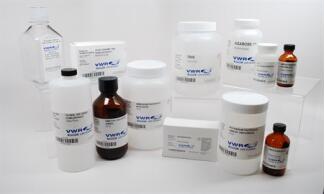
Whatman 滤膜 28979344 EPTFE PP 0.2UM A 1X200M 1SF PK
Whatman 滤膜 28979344 EPTFE PP 0.2UM A 1X200M 1SF PK EPTFE PP 0.2UM A 1X200M 1SF PK
Whatman 滤膜 10370368 GF 0.009 THICKNESS 30MMx25M
Whatman 滤膜 10370368 GF 0.009 THICKNESS 30MMx25M GF 0.009 THICKNESS 30MMx25M
Pall颇尔滤膜 7150 KIT HSATP CORREL RG
Pall颇尔滤膜 7150 KIT HSATP CORREL RG 851 6805
Himedia Media for Anaerobes 厌氧菌培养基
Himedia Media for Anaerobes 厌氧菌培养基
上海金畔生物科技有限公司,作为HiMedai公司在中国的代理商,在微生物培养和检测领域,会一如既往地为您带来优质的服务。
Himedia代理,欢迎新老客户访问Himedia官网或者咨询我们获取更多有关产品信息。
Veterinary > Media for Anaerobes

Media for anaerobes such as Clostridium spp. and others responsible for various diseases in veterinary animals are offered by HiMedia. Reinforced Clostridial Agar, SPS agar, Anaerobic Thioglycollate Medium Base are some of the medium used for their isolation and cultivation.
厌氧菌的培养基,如梭菌。其他对兽医疾病负责的人则由Himedia提供。强化梭菌琼脂、SPS琼脂、厌氧巯基培养基是分离和培养的几种培养基。
Himedia Media for Anaerobes 厌氧菌培养基
| FD013 | S.F.P. Supplement (Perfringens S.F.P. Supplement) |
| FD045 | Egg Yolk Emulsion (50ml / 100 ml per vial) |
| GM154 | Reinforced Clostridial Agar |
| GM632 | SPS Agar |
| LQ080V | Cooked Meat Broth |
| M1005 | S.F.P. Agar Base |
| M149 | Cooked M Medium (R.C.Medium) |
| M154 | Reinforced Clostridial Agar |
| M1616 | Anaerobic Thioglycollate Medium Base |
| M387 | McClung Toabe Agar Base |
| M632 | SPS Agar |
| M928 | Liver Broth |
| MV1005 | S.F.P. HiVeg™ Agar Base |
| MV154 | Reinforced Clostridial HiVeg™ Agar |
| MV387 | McClung Toabe HiVeg™ Agar Base |
| MV632 | SPS HiVeg™ Agar |
Whatman 滤膜 10462252 CELTRON 30/0.2 CAGF 50/PK
Whatman 滤膜 10462252 CELTRON 30/0.2 CAGF 50/PK CELTRON 30/0.2 CAGF 50/PK
Whatman 滤膜 3668900414 SG81 480MM x 630M REEL
Whatman 滤膜 3668900414 SG81 480MM x 630M REEL SG81 480MM x 630M REEL
Amresco 0341-100G ACRYLAMIDE 丙烯酰胺
Amresco 0341-100G ACRYLAMIDE 丙烯酰胺
Axygen试剂盒 MAG-FRAG-I-5 AxyPrep Mag 磁珠法片段筛选试剂盒-I
Axygen试剂盒 MAG-FRAG-I-5 AxyPrep Mag 磁珠法片段筛选试剂盒-I 4 prep 盒 1905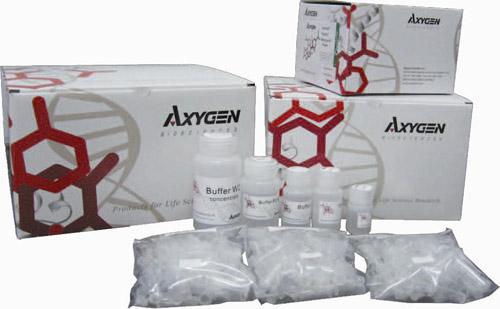
Harlan teklad官网动物饲料 Rabbit diets 兔饲料 国内高纤维兔饲料定制
特克勒德兔饲料是营养完整的颗粒饲料制定,以满足已知的营养需求兔在生长,繁殖和维持。
高质量的植物蛋白质来源提供了适当数量和比例的必需氨基酸,以促进家兔的一般健康和状况,在所有阶段的生命周期。
特克拉德兔日粮中含有脱水苜蓿粉,这是一种高品质的饲料成分,能促进消化系统的正常运转。紫花苜蓿粉中的蛋白质也被兔很好地利用。
矿物质和维生素强化这些饮食确保充足的营养平衡,以促进适当的生长,发育,维持和繁殖的研究兔。
建议的储存条件:
- 凉爽和干燥;在华氏70度或以下,湿度最好在50%以下,但高达65%是可以接受的。
- 清洁无害虫
- 在原始包装中或容器中,防止连续暴露于光线下,并将空气暴露在最小范围内。
Teklad rabbit diets are nutritionally complete pelleted diets formulated to meet the known nutrient requirements of the rabbit during growth, reproduction and maintenance.
High-quality plant protein sources supply the proper amounts and proportions of essential amino acids necessary to promote the general health and condition of rabbits during all phases of the life cycle.
Teklad rabbit diets contain dehydrated alfalfa meal, a high-quality forage ingredient that promotes the proper functioning of the digestive system. The protein in alfalfa meal also is utilized well by rabbits.
Mineral and vitamin fortification of these diets ensures an adequate nutritional balance to promote the proper growth, development, maintenance, and reproduction of research rabbits.
| Products | ||
|---|---|---|
| Teklad rabbit diets | Non-autoclavable orm | Irradiated |
| Teklad global rabbit diet | 2030, 2030C | 2930 |
| Teklad global high fiber rabbit diet | 2031, 2031C | 2931 |
| Teklad 15% rabbit diet | 8630 | |
| Not all products are stocked locally; extended lead time and additional fees may apply. Many diets are available in certified format designated by a “C” following the product code. When diets are certified a representative sample is tested for a panel of contaminants. If not stocked as certified, certification can be made available upon request. Minimum order size and additional charges may apply. |
||
Recommended storage conditions:
- Cool and dry; at or below 70 degrees fahrenheit with humidity ideally below 50%, but up to 65% is acceptable
- Clean and free of pests
- In original packaging or in a container that prevents continuous exposure to light and minimal exposure to air
Research Diets动物造模饲料Research diets 食源性肥胖症饲料
| 食源性肥胖症饲料 Research Diets动物造模饲料Research diets 食源性肥胖症饲料 |
||||||
|
||||||
| 推荐产品 | 货号 | 规格 | 生产厂商 | |||
| 60%Kcal High-Fat(DIO) Diets | D12492 | 12.5kg | 美国RDI | |||
| 45%Kcal High-Fat(DIO) Diets | D12451 | 12.5kg | 美国RDI | |||
| 10%Kcal High-Fat(DIO) 7% Sucrose Control Diets match D12492 | D12450J | 12.5kg | 美国RDI | |||
| 10%Kcal High-Fat(DIO) 17% Sucrose Control Diets match D12451 | D12450H | 12.5kg | 美国RDI | |||
| 10%Kcal High-Fat(DIO) 35% Sucrose Control Diets | D12450B | 12.5kg | 美国RDI | |||
| 10%Kcal High-Fat(DIO) No Sucrose Control Diets | D12450K | 12.5kg | 美国RDI | |||
| 糖尿病 / 胰岛素抵抗饲料 | ||||||
|
||||||
| 推荐产品 | 货号 | 规格 | 生产厂商 | |||
| 58%Kcal Diabetes/ Insulin Resistance Diets sucrose | D12331 | 12.5kg | 美国RDI | |||
| 58%Kcal Diabetes/ Insulin Resistance Diets corn starch | D12330 | 12.5kg | 美国RDI | |||
| 11%Kcal Diabetes/ Insulin Resistance Diets sucrose-Control | D12329 | 12.5kg | 美国RDI | |||
| 11%Kcal Diabetes/ Insulin Resistance Diets corn starch-Control | D12328 | 12.5kg | 美国RDI | |||
| 脂肪肝(NAFLD)饲料 | ||||||
|
||||||
| 推荐产品 | 货号 | 规格 | 生产厂商 | |||
| Methionine and Choline Deficient Diet | A02082002B | 12.5kg | 美国RDI | |||
| Methionine/choline deficient diet with 60 kcal% fat | A06071301B | 12.5kg | 美国RDI | |||
| choline deficient diet with 0.1% Methionine | A06071302 | 12.5kg | 美国RDI | |||
| 40 kcal% Fat, 20 kcal% Sucrose, and 2% Cholesterol | D09100301 | 12.5kg | 美国RDI | |||
| 动脉粥样硬化饲料 | ||||||
|
||||||
| 推荐产品 | 货号 | 规格 | 生产厂商 | |||
| High fat rodent diet with 1.25% cholesterol | D12108C | 12.5kg | 美国RDI | |||
| 5% Sodium Cholic Acid,12.5% Cholesterol | D12336 | 12.5kg | 美国RDI | |||
| 高血压饲料 | ||||||
|
||||||
| 推荐产品 | 货号 | 规格 | 生产厂商 | |||
| AIN-76A + 8% Sodium Chloride | D05011703 | 12.5kg | 美国RDI | |||
| AIN-76A- widely used, balanced,purified rodent diet | D10001 | 12.5kg | 美国RDI | |||
Amresco 0529-500G CITRIC ACID 柠檬酸
Amresco 0529-500G CITRIC ACID 柠檬酸
Whatman 滤膜 8115-2250 CF5 22MMX50M
Whatman 滤膜 8115-2250 CF5 22MMX50M CF5 22MMX50M
Whatman 滤膜 1454-6907 GR54 356MMx85M 22UM REEL 1/PK
Whatman 滤膜 1454-6907 GR54 356MMx85M 22UM REEL 1/PK GR54 356MMx85M 22UM REEL 1/PK
Amresco 0191-12KG AMMONIUM SULFATE 硫酸胺
Amresco 0191-12KG AMMONIUM SULFATE 硫酸胺
荧光染料42430 BDP TMR azide 25 mg
lumiprobe荧光染料42430 BDP TMR azide 25 mg lumiprobe荧光染料BDP TMR 叠氮基 25 mg 410
Whatman 滤膜 29167987 SPARTAN 30/0.2 RC 500/PK – PROMO20
Whatman 滤膜 29167987 SPARTAN 30/0.2 RC 500/PK – PROMO20 SPARTAN 30/0.2 RC 500/PK – PROMO20
金属纳米材料|金属纳米材料|无机试剂|试剂|关东化学株式会社
超微粒子金属氧化物NanoTek ®
稀土超微粒子金属氧化物
金属纳米粒子[ Ionic Liquids威盛电子GmbH制]
Nano手デライト型(R型)二氧化锰 [株式会社前锋科学实验室制] 新
金属纳米分散液 Metallic Nano Dispersions
[四国测量工业株式会社制]
该文章由WP-AutoPost插件自动采集发布
脂肪酸分析用|食品理化学分析|食品分析用试剂|试剂|关东化学株式会社
该文章由WP-AutoPost插件自动采集发布
Pall颇尔滤膜 4829 MICROFNL 300PLUS0.45 GN6,PK20
Pall颇尔滤膜 4829 MICROFNL 300PLUS0.45 GN6,PK20 192 1538
Amresco 0188-2.5KG D-GLUCOSE, ANHYDROUS D-葡萄糖,无水
Amresco 0188-2.5KG D-GLUCOSE, ANHYDROUS D-葡萄糖,无水
Harlan teklad官网动物饲料 Guinea pig diets 豚鼠饮食 上海动物饲料定制
特克勒德豚鼠饮食是为了满足豚鼠在生命周期的各个阶段的营养需要而制定的完整和平衡的饮食。
植物和鱼粉来源所提供的蛋白质提供了豚鼠所需必需氨基酸的平衡。大豆油中的脂肪提供了良好的毛发所必需的脂肪酸。
特克拉德豚鼠的饮食适当强化维生素和矿物质,以满足豚鼠在生长、维持和繁殖过程中的需要。
维生素C被包括在这些饮食中,因为豚鼠(就像人类和其他灵长类动物一样)需要饮食中的维生素C来防止坏血病。稳定维生素C(L-抗坏血酸-2-聚磷酸)用于延长保质期.
紫花苜蓿粉是一种高品质的饲料产品,有助于维持豚鼠消化系统的正常运转。该公司,颗粒饮食有助于防止饲料浪费。
建议的储存条件:
- 凉爽和干燥;在华氏70度或以下,湿度低于50%的理想值,但高达65%是可以接受的。
- 清洁无害虫
- 在原始包装中或容器中,防止连续暴露于光线下,并将空气暴露在最小范围内。
Teklad guinea pig diets are complete and balanced diets formulated to meet the nutritional needs of guinea pigs during various stages of the life cycle.
Protein supplied by plant and fish meal sources provides the balance of essential amino acids required by guinea pigs. Fat from soybean oil supplies essential fatty acids necessary for a good hair coat.
Teklad guinea pig diets are properly fortified with vitamins and minerals to meet the needs of guinea pigs during growth, maintenance, and reproduction.
Vitamin C is included in these diets because guinea pigs (as do man and other primates) require a dietary source of vitamin C to prevent scurvy. Stabilized vitamin C (L-ascorbyl-2-polyphosphate) is used to extend the shelf life.
Alfalfa meal is included as a high-quality forage product to help maintain the normal functioning of the guinea pig’s digestive system. The firm, pelleted diet aids in preventing feed wastage.
| Products | ||
|---|---|---|
| Teklad guinea pig diets | Non-autoclavable form | Irradiated |
| Teklad global guinea pig diet | 2040, 2040C | 2940 |
| Teklad global high fiber guinea pig diet | 2041 | 2941 |
| Teklad guinea pig diet | 7006 | |
| Not all products are stocked locally; extended lead time and additional fees may apply. Many diets are available in certified format designated by a “C” following the product code. When diets are certified a representative sample is tested for a panel of contaminants. If not stocked as certified, certification can be made available upon request. Minimum order size and additional charges may apply. |
||
Recommended storage conditions:
- Cool and dry; at or below 70 degrees fahrenheit, humidity below 50% ideal, but up to 65% is acceptable
- Clean and free of pests
- In original packaging or in a container that prevents continuous exposure to light and minimal exposure to air
BD培养基 233810 500 g EA Difco Czapek Dox Broth CZAPEK DOX肉汤,500G
BD培养基 233810 500 g EA Difco Czapek Dox Broth CZAPEK DOX肉汤,500G 
日本 JaICA 老化 Antibody系列产品
日本 JaICA 老化 Antibody系列产品
上海金畔生物作为日本 JaICA 老化中国代理商,欢迎新老客户访问日本 JaICA 老化官网或者咨询我们获取更多日本 JaICA 老化产品线价格说明书等信息。
日本老化制御研究所 Jaica代理

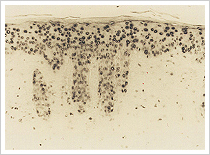
8-hydroxy-2′-deoxyguanosine (8-OHdG) is a product of oxidatively damaged DNA formed by hydroxy radical, singlet oxygen and direct photodynamic action. Anti 8-OHdG monoclonal antibody (clone N45.1) is highly specific for 8-OHdG, and is suitable for immunohistochemistry. Cross reactivity have been checked for 8-OHdG analogues (guanosine(G),7-methyl-G, 6-SH-G, 8-Bromo-G, dA, dC, dT, dI, dU, dG, O6-methyl-dG, 8-OHdA, guanine(Gua),O6-methyl-Gua, 8-OH-Gua, uric acid, urea, creatine, creatinine, 8-sulfhydryl-G, 8-OH-G).

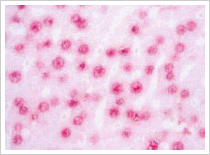
Thymidineglycol (TG) is one of the major oxidation products of DNA. Thymidine (T) can be damaged by oxidative stress such as radiation and energy metabolism. Two different pathways to form TG have been suggested. Deoxythymidine in DNA is directly oxidised by hydroxy radical, to form TG. TG can be also formed through an intermediate thymidine chlorohydrin, which is derived from hypochlorous acid (HOCl) from neutrophil myeloperoxidase. Thymidineglycol is derived from DNA, not from RNA. TG is the oxidative stress marker secific for DNA damage.

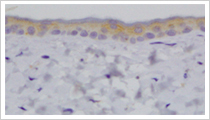
Tyrosine is one of the major targets of protein oxidation, and until today various tyrosine derivatives such as nitrotyrosine, dityrosine and halogenated tyrosine depending on the type of free radicals. DT is a tyrosine dimer derived from tyrosyl radicals which is formed by reactive oxygen species (ROS), metal-catalyzed oxidation, ultraviolet irradiation, and peroxidases. DT have been found in atherosclerotic lesions, and lipofuscin of pyramidal neurons of aged human brains. Dityrosine is one of the specific biomarkers for protein oxidation.

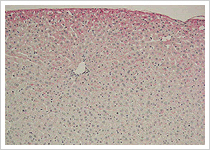
Tyrosine is one of the main targets of protein oxidation, and it have been reported form nitrotyrosine, dityrosine and halogenated tyrosines depending on the type of free radicals. For example, hypochlorous acid (HOCl) and hypobromous acid (HOBr) are derived from neutrophil myeloperoxidase (MPO) and eosinophil peroxidase (EPO), and known to form dihalogenated tyrosines such as DiBrY, DiClY and DiIY. It is expected that DiBrY may be a novel biomarker for tissue damage which is related to inflammatory and allergic disorders.


During the peroxidation process, a variery of aldehydes are formed. 4-hydroxy-2-nonenal (4-HNE) is an alpha, beta unsatulated aldehyde that can be formed by peroxidation of omega-6 unsatulated fatty acids such as linoleic acid and arachidonic acid. Especially, 4-HNE formed inside living body is reported to originate from phospholipid-bound arachidonic acid. 4-HNE may be one of the most reliable biomarker of lipid peroxidation. This antibody show almost negligible reactivity with proteins that were treated with other aldehydes, such as 2-nonenal, 2-hexenal, 1-hexanal, 4-hydroxy-2-hexenal,formaldehyde, or glutaraldehyde.

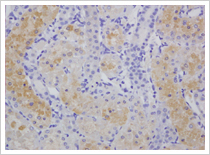
Aldehydes such as malondi-aldehyde (MDA) and 4-hydroxy-2-nonenal (4-HNE) have been reported as one of the advanced lipid peroxidation products. But recently in the earlier stage of lipid peroxidation, 13-hydroperoxyoctadecanoic acid (13-HPODE) is found to be covalently bound to proteins1). Hexanoyl-Lysine adduct (HEL) is a novel lipid hydroperoxide-modified lysine residues. HEL is formed by oxidative modification by oxidized omega-6 fatty acids such as linoleic acid or arachidonic acid. This monoclonal antibody is spesific for proteins and peptides containing HEL. Suitable for HEL detection by immunohistochemistry and western blotting.


Acrolein (ACR) is a representative carcinogenic aldehyde found ubiquitously in the environment and formed endogenously through oxidation reactions, such as lipid peroxidation and myeloperoxidasecatalyzed amino acid oxidation. This antibody is specific for the ACR-modified protein, especially FDP-lysine type derivative.

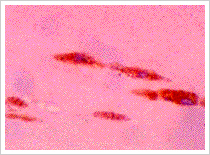
Malondialdehyde (MDA) is one of the major aldehyde derive from lipid peroxidation. MDA is highly reactive aldehyde and reacts with lysine residue in protein. The reaction with MDA and lysine residue leads to the formation of numerous numbers of adducts, such as dihydropyridine-lysine (DHP-lysine) type derivative. This monoclonal antibody is specific for the MDA-modified protein, especially DHP-lysine type derivative.

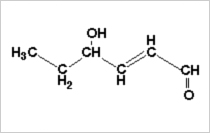
4-hydroxy-2-alkenal is one of the major lipid peroxidation products, and shows many biological effects such as high toxicity to cells. Among them, 4-hydroxy-2-hexenal (HHE) is an aldehyde formed during peroxidation of n-3 fatty acids such as docosahexaenoic acid. HHE is highly reactive aldehyde and reacts with histidine residue of protein to form Michael-addition type adducts. This antibody is specific for HHE-histidine Michael adduct (HHE-His) and enable to detect HHE-His in the tissue samples.


Crotonaldehyde (CRA) is a representative carcinogenic aldehyde formed endogenously through lipid peroxidation. CRA is highly reactive aldehyde and reacts with lysine residue in protein. The reaction with CRA and lysine residue leads to the formation of numerous numbers of adducts. This antibody is specific for the CRA-modified protein.

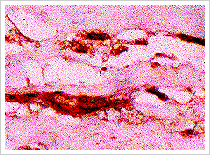
Methylglyoxal (MG), an endogenous metabolite that increases in diabetes and is a common intermediate in the Maillard reaction (glycation), reacts with proteins and forms advanced glycation end products (AGE). MG reacts with arginine residue in protein and forms numerous numbers of adducts, such as argpyrimidine. This antibody is specific for argpyrimidine: N-(5-hydroxy-4,6-dimethylpyrimidine-2-yl)-L-ornithine.


Cholesterol oxidation products, especially 7-Ketocholesterol (7KC), have been the focus of much attention because they are present in human atherosclerotic plaque and display a wide range of atherogenic properties in vitro and to some extant in vivo. This antibody is specific for 7KC. This antibody is useful to detect 7KC in tissue samples. A frozen tissue sample is recommended for immunohistochemistry.

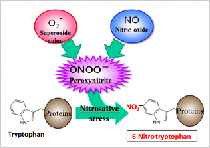
Reactive nitrogen species (RNS) are formed in a variety of diseases such as atherosclerosis, inflammation, cancer and neurodegenerative disiases. Peroxinitrite (ONOO–) is known as a potent biological oxidant, which is formed via very fast reaction between nitric oxide (NO) and superoxide (O2–). 6-nitrotryptophan (6-NO2-Trp) is shown to be one of the most stable and major ONOO–-modified amino acids, and growing evidences suggest that nitrotryptophan may play a significant role in the cellular regulation under nitrosative stress.
Whatman 滤膜 34549847 54SFC 8INx300M ROLL
Whatman 滤膜 34549847 54SFC 8INx300M ROLL 54SFC 8INx300M ROLL
Amresco 0399-250G GLUTATHIONE, REDUCED 谷胱甘肽(还原型)
Amresco 0399-250G GLUTATHIONE, REDUCED 谷胱甘肽(还原型)
Whatman 滤膜 2611 Polycap HD36囊式滤器, 0.45/1.0m 5/盒
Whatman 滤膜 2611 Polycap HD36囊式滤器, 0.45/1.0m 5/盒 POLYCAP 36 .45/1.0 HD 5/PK A/A
Axygen PCR-TS 热盖膜,PP, 60um 100张/盒,5盒/箱
Axygen PCR-TS 热盖膜,PP, 60um 100张/盒,5盒/箱 3259.46 
Whatman 滤膜 6870-2504 GD/X 25针头式滤器, 0.45m Nylon 150/盒
Whatman 滤膜 6870-2504 GD/X 25针头式滤器, 0.45m Nylon 150/盒 GD/X 25/0.45 NYL 150/PK
OXOID培养基 CM0739B 无血弯曲杆菌选择性琼脂基础CM1183B BLOOD FREE CAMPY SELECT AGAR
OXOID培养基 CM0739B 无血弯曲杆菌选择性琼脂基础CM1183B BLOOD FREE CAMPY SELECT AGAR 829.8685071936
NISSUI 日本日水培养基 08190 Dulbecco’s PBS (-) “Nissui”
NISSUI 日本日水培养基 06741 Compact Dry “Nissui” TC
Lumiprobe品牌介绍及代理商 中国授权代理商
Lumiprobe品牌介绍及代理商 中国授权代理商
Lumiprobe授权代理商–上海金畔生物

Lumiprobe Corporation是美国一家高品质生物技术公司,专业提供分子生物学研究用的活性荧光染料。从2006年开始,公司生产并销售生命科学研究和诊断学应用的优质化学药品。产品主要有:活性染料(Reactive Dye)和SYBR Green I 染料,用于寡核苷酸合成的亚磷酰胺,点击化学用染料和其它试剂。 产品主要应用:点击化学(Click Chemistry)、蛋白质组学研究中的双向荧光差异凝胶电泳(2D DIGE)和实时荧光定量PCR(Realtime PCR)。 上海金畔生物科技有限公司作为Lumiprobe中国正规签约授权代理商,上海金畔生物Lumiprobe官网:http://lumiprobe.jinpanbio.com/。可提供Lumiprobe的完整产品线,所有规格产品保证货期5-7工作日到货,满足您的各种科研实验需求。产品包括:羧酸类染料、羰基类染料,标记分子氨基活性染料,标记分子巯基活性染料,动物活体成像用染料,蛋白质、多肽、核酸等生物分子标记染料、点击化学等。渠道正规(市场上部分是分装,质量不能保证),质量保证,价格极具竞争力,而且我们的货期仅需要5-7工作日,不需要像其他家攒单导致货期3-4周。
BD培养基 228300 500 g EA Difco Tryptic Soy Blood Agar Base EH 大豆胰蛋白酶血琼脂基础EH
BD培养基 228300 500 g EA Difco Tryptic Soy Blood Agar Base EH 大豆胰蛋白酶血琼脂基础EH 
Research Diets 动物疾病造模饲料 D12330 肥胖 糖尿病 12.5kg
Research Diets 动物疾病造模饲料 D12330 肥胖 糖尿病 12.5kg 58 kcal% fat w/corn starch.Surwit Diet. 肥胖;糖尿病